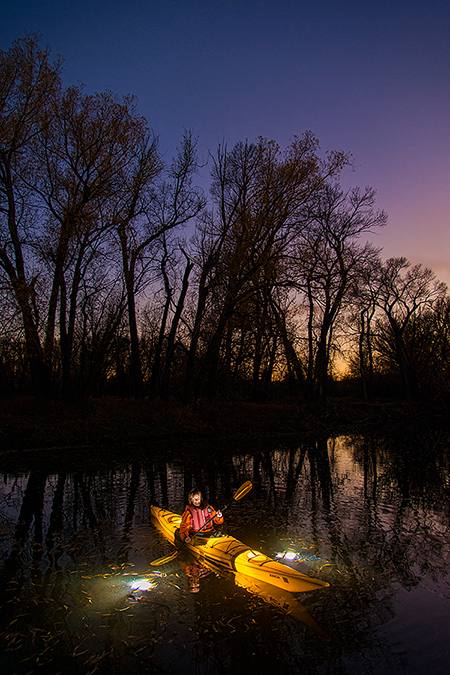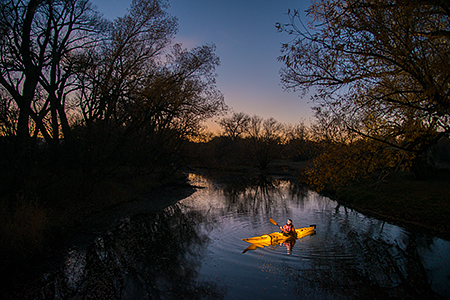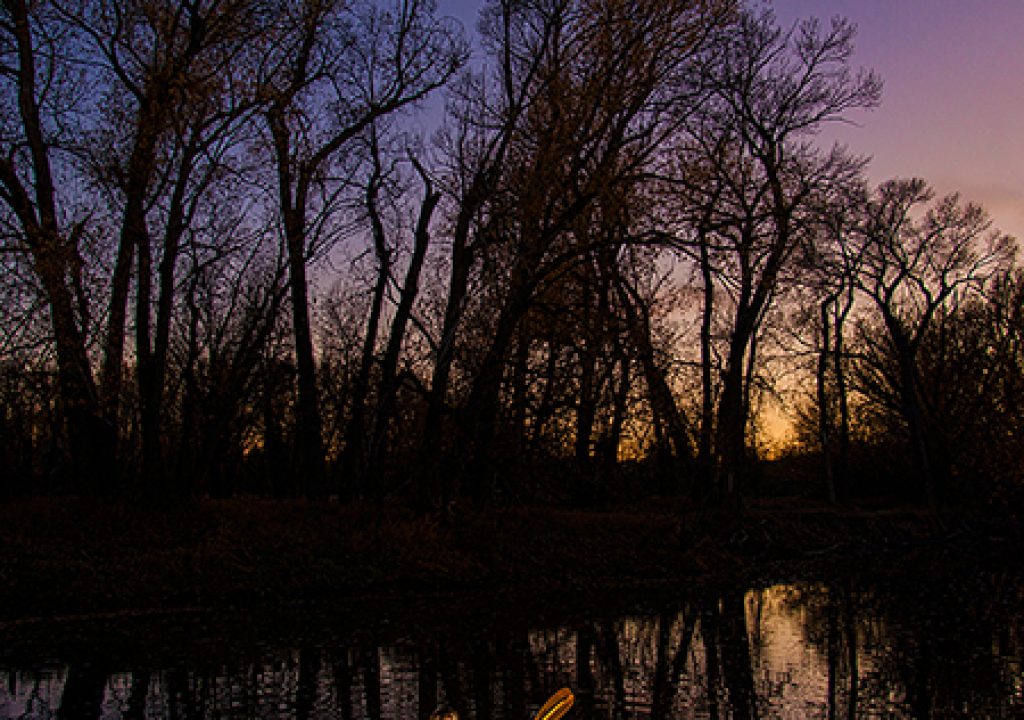
I’ll admit I can’t resist experimenting with light. When I have time between assignments and workshops, I start conjuring up wild new things to do with light. Sometimes it is refining a portrait lighting style, other times it is trying to haul studio packs a hundred feet up a rock face. Along with this experimentation comes success and failure…probably more failure than success! But you never know until you try, and better to try than just thinking about about trying.
I have been using Pocket Wizard’s FlexTT5 for sometime now, and they work great. Simple to set up, the transmitter/receivers eliminate the need for line of sight with your camera since they use a radio signal. The sun doesn’t interfere with the signal, and I can trigger my speedlight over ¼ mile away using this system. Which got me thinking (not a good thing), would this signal work underwater?
I live near a wild and scenic river, and spend many summer days in a kayak or raft. Photographing these sports is always fun and exciting. But after years of capturing the whitewater action, I always wondered what it might look like with flashes going off underwater. Would my flashes get trashed in a water-induced explosion? Only one way to find out.

To make the shot happen, I had five SB900s attached to PocketWizard FlexTT5s. These would be triggered at my camera using another FlexTT5. I put three speedlights into a yellow sea kayak, one each in the bow, cockpit and stern. This would make my kayak glow, a shot I have done in the past that looks pretty cool.
But here is where the fun began. I put two more speedlights into waterproof cases with clear tops for my underwater lights. I strapped these cases to cinder blocks (I’m not recommending anyone sink their flashes, disaster might strike!) and sunk them to the bottom of the river. I wasn’t sure just how waterproof the cases were, so I worked fast.

Shooting from shore I quickly answered my biggest question; the PocketWizard system triggered the flashes underwater as long as the flashes weren’t too deep. The folks at PocketWizard had warned me that water would quickly absorb the radio signal, and this proved to be true. If the lights were four feet deep, they only worked sporadically. But right near the surface, they worked every time. After a few shots, I retrieved the underwater flashes. They were totally dry in the waterproof cases. And I had my underwater flash image.
Looking at my images now, I like the glowing kayak shot better than the one with underwater flash. But now I have some new ideas on how to incorporate underwater speedlights in a future shoot. Stay tuned!


Filmtools
Filmmakers go-to destination for pre-production, production & post production equipment!
Shop Now













